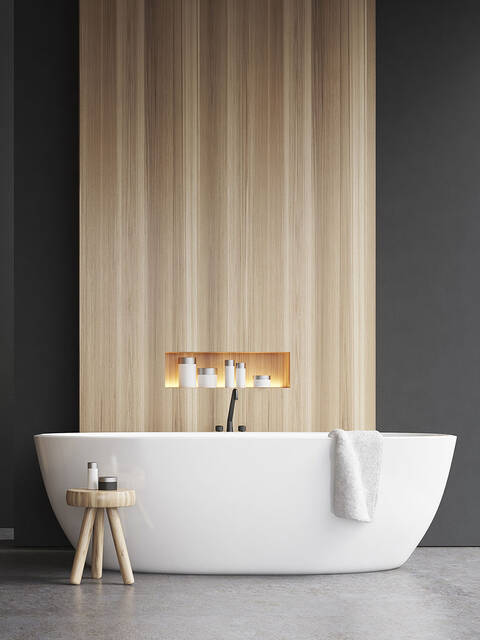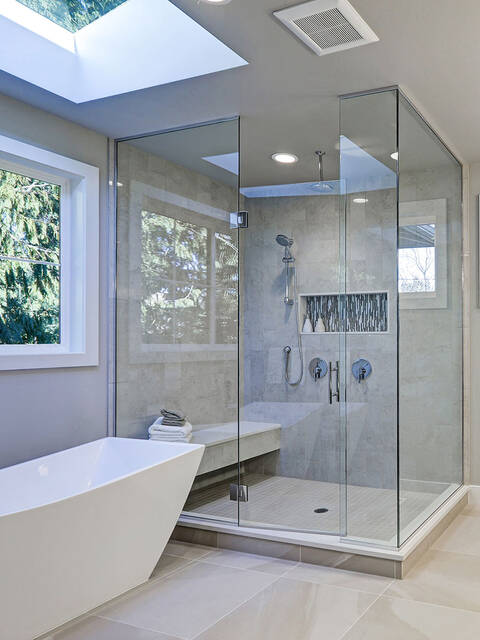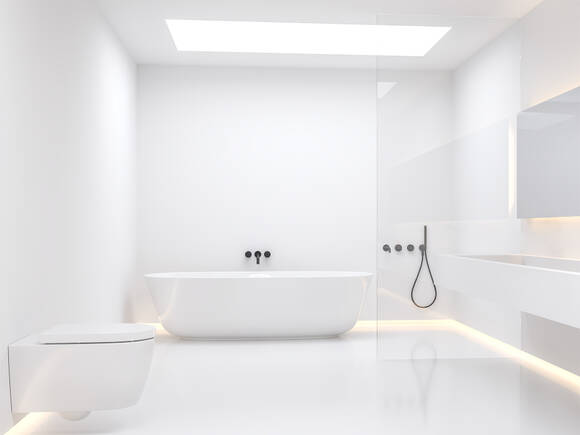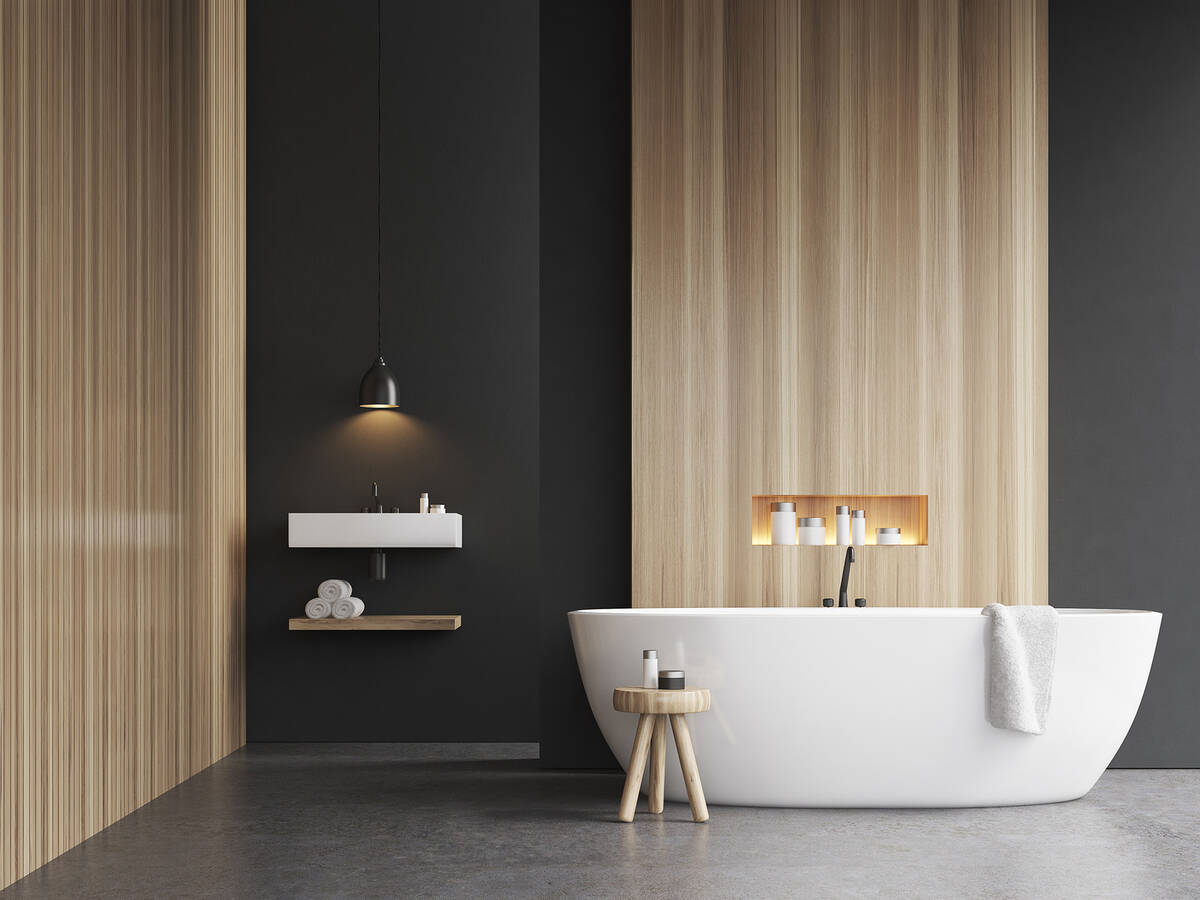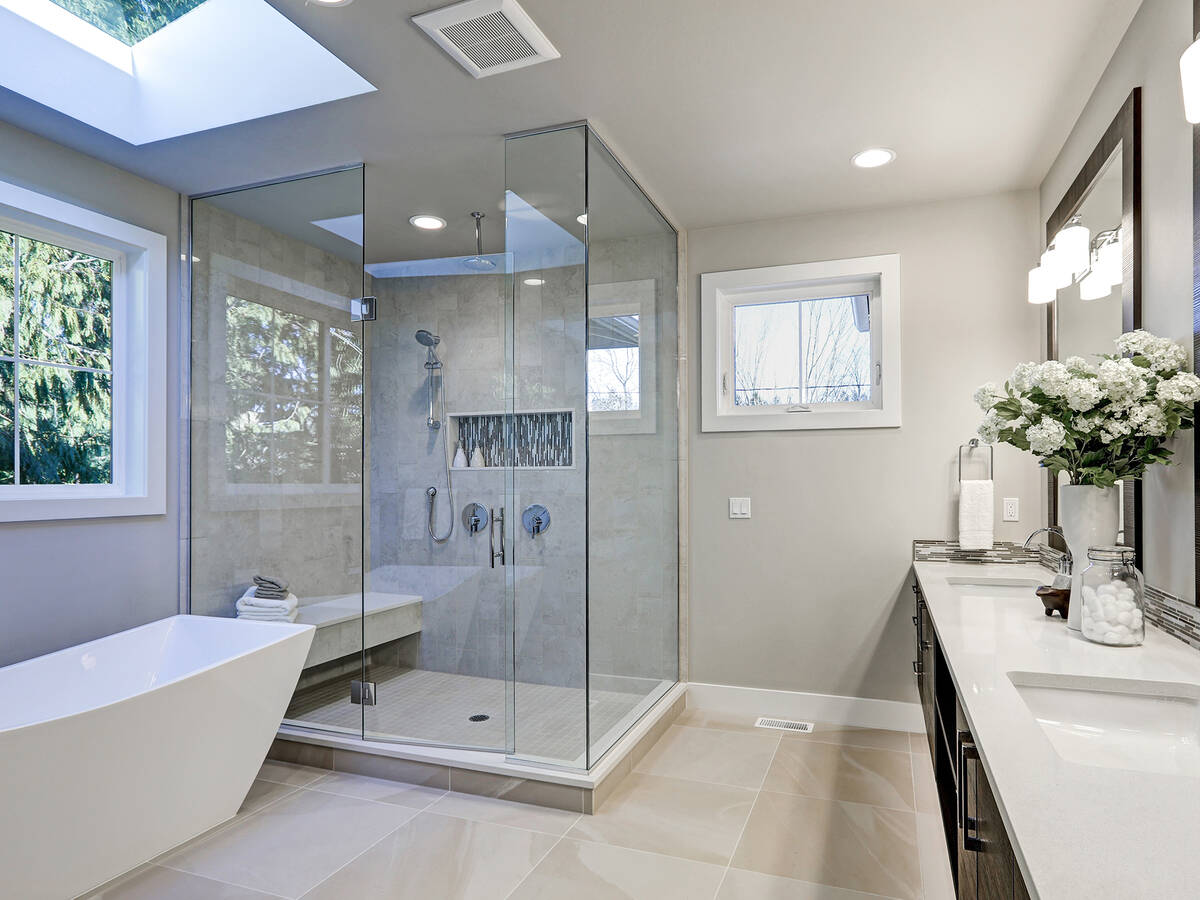What bathroom ventilation is made of
Ventilation in the bathroom – how to let the good air in
Down with stuffy, humid air in the bathroom! A ventilation system ensures fresh air at all times. This improves hygiene and allows hot steam to escape. We’re here to show you what modern systems can do and how to find the right model for you.

Why have a ventilation system in the bathroom?

The day starts with a warm shower to make your body feel good. And then the moisture needs to escape the bathroom. After a long, hot shower or a soak in the bath, the humidity in the air can soon reach 80%. You can see it on steamed-up mirrors and moisture-laden walls. If you then ventilate via the window, valuable time passes until the mirror is usable once again. The warm, comfy feeling also flies right out the window, as the room and your body cool off pretty quickly.
Bathroom ventilation can be of some help here. It ensures good air exchange, which is vastly important. Unpleasant smells, moisture, pollutants and dust can be transported out of the room quickly and with no effort at all. Regular air exchange is also the only way to prevent mould from forming. Good systems transport the extracted air outside and feed fresh air in. Pollutants, dust and pollen are filtered out of the air here, which is great for people with allergies and asthma.
If you don’t have automatic ventilation, you should open the windows for several minutes several times a day to ensure a supply of fresh air. This soon becomes unpleasant, especially in winter. But even then, this does not minimise the risk of mould formation. Wet towels and water residue continue to release moisture into the air long after showering. The room also cools quickly, so lots of energy is consumed unnecessarily reheating the room to the original temperature.
The right ventilation for your bathroom: all you need to know when purchasing

There is a huge array of technical systems. You may be asking yourself, ‘Which is suitable for my home?’ The answer to this will depend on your own unique situation. As a basic rule, there are two types of ventilation systems.
Air out: extraction systems
This is a one-way principle only, as the air is transported outside, but not inside. As there is a lack of fresh-air supply, the window still needs to be opened on a regular basis. This kind of solution should only be used if there is no other option for a more efficient supply of fresh air.
Air in: inlet and extraction systems
Bad air out, fresh air in: A combined air inlet and extraction system is the best solution. In new builds, this is connected directly to the central ventilation system, whereas it works as decentralised ventilation when retrofitted. The advantages are obvious: You don’t have to ensure there is a supply of fresh air manually. Good systems can also automatically detect excessive humidity.
The automatic method is particularly worth recommending when your bathroom is furnished with delicate materials. Exclusive paper-based wallpaper and wood flooring will thank you when you install a modern system to extract moisture.
Good to know: Ventilation systems are mandatory in bathrooms without windows.
When making a purchase, please note the following aspects:
- Fan size: How big a fan needs to be depends on the size of the room and the required number of air changes per hour. For example, an eight to 12 m2 bathroom needs five to nine air changes per hour, thus a fan with an air flow volume of 90 - 150 m3/h.
- Built-in moisture sensor: This is an important technical detail, as the sensor automatically activates the system as soon as the humidity exceeds a certain value. There should be a manual switch for air extraction.
- Heat recovery: The heat from the exhaust air is stored and released back through the air inlet, saving on energy costs.
- Nicely clad: Ensure the system’s look matches your bathroom. Choose the materials that will blend in with the style.
- VDE GS mark: When choosing the appliance, ensure it has a VDE mark. This indicates the electrical appliance complies with European standards.
Be safe and have your system installed by specialists.
Frequently asked questions about ventilation in the bathroom
It is convenient in the bathroom, as it means the windows no longer need to be opened for ventilation. This is particularly pleasant in cold weather. Lots of heat is also not unnecessarily lost from the room, which has a positive impact on the building’s energy management. Last but not least, it prevents mould from forming.
Without optimum air circulation in the bathroom, the risk of mould formation increases. Spores and dust can also spread throughout the room, which will have a detrimental impact on the air quality.
There are two different systems: Extraction systems transport air out of the bathroom. Combined inlet and extraction systems also supply fresh air, so the latter is recommended.
First, check the building regulations. Wherever possible, air inlet and extraction systems should be combined to make manual air supply redundant. You should also make sure the fan is the correct size and appropriate for the size of the respective room.
If you are allergic to pollen and dust, you should also install an air inlet system to ensure the air is as clean as possible.
Good air automatically: systematic planning
Use professional air inlet and extraction systems to ensure your home has quality air. This will prevent excessive humidity and damages that result from this, such as mildew stains or even mould.
Authorised dealers
